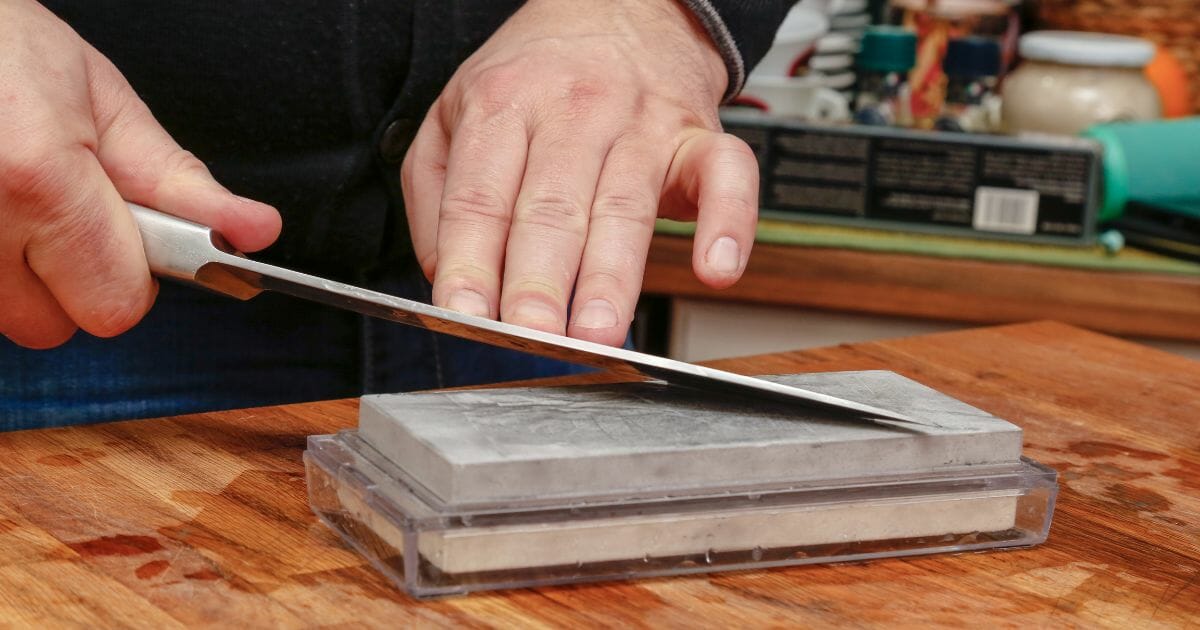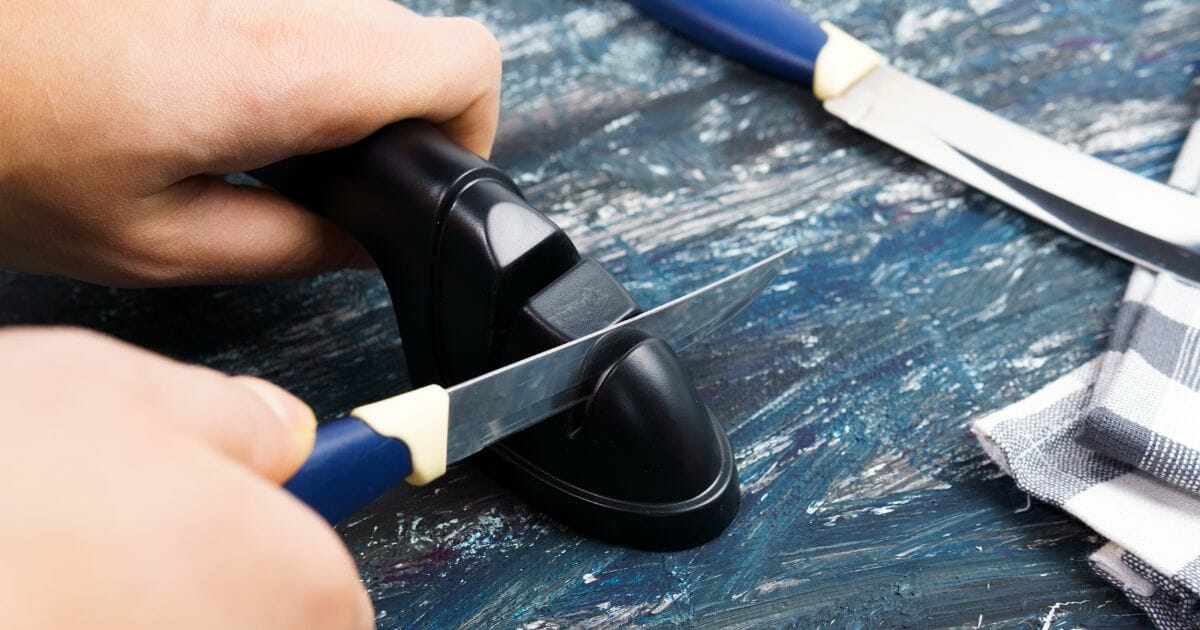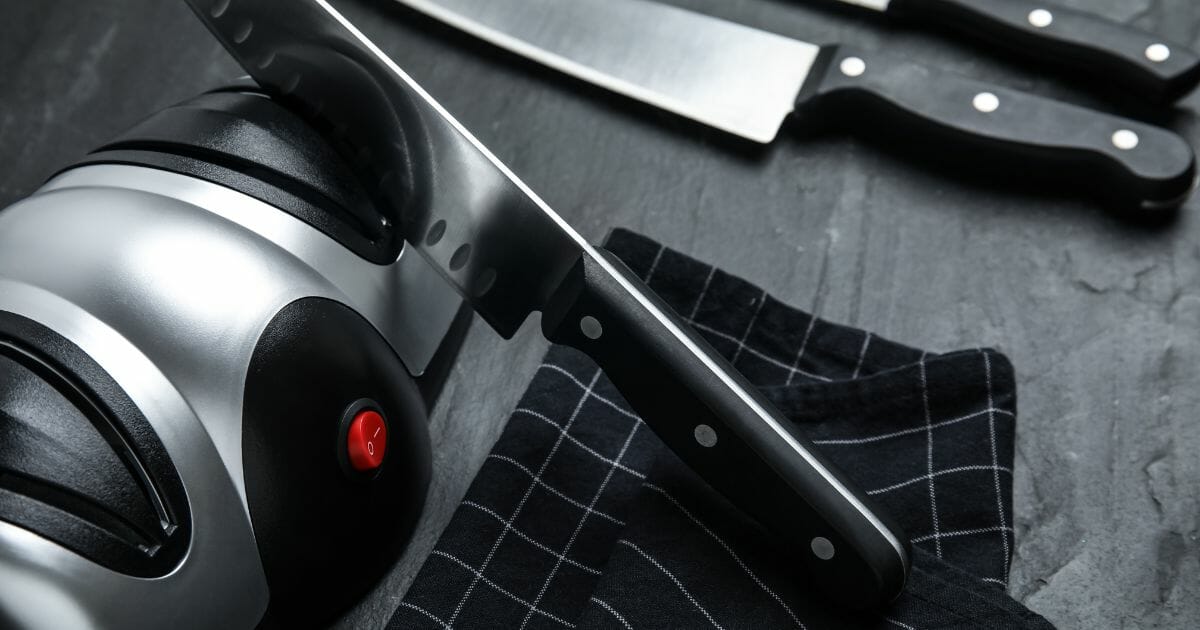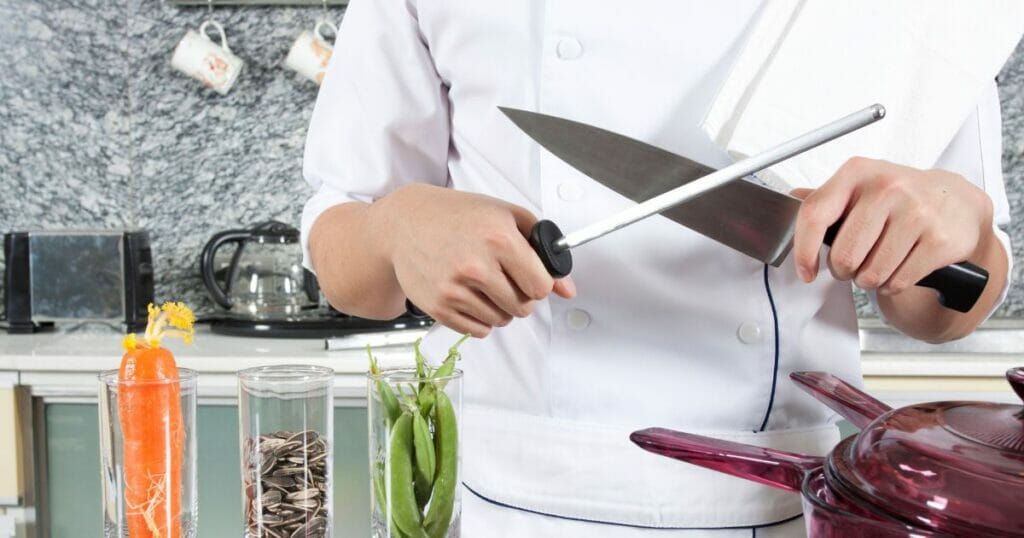Whether you’re a professional chef or not, a dull knife can be one of the most frustrating items to use in a kitchen, and it can be useless for cutting something as simple as an onion, not to mention more complex foods. Having a sharp knife makes the cooking process significantly smoother and more enjoyable.
Kitchen knives become dull with use and need to be sharpened from time to time. Using a knife with a dull blade is not just exasperating but can also cause accidents. Contrary to popular belief, a dull knife can be just as dangerous as a sharp knife. The more force you have to exert, the higher your risk of incurring injuries like cuts, stabs, and even potential amputations.
In addition, a dull blade can butcher your vegetables, and leave their essence to dry on your cutting board, meaning you miss out on the delicious taste and aroma of the food you’re cooking. If you’ve ever tried to slice a ripe tomato with a dull knife, you know the process can be messy.
You can identify a dull knife by examining the blade edge. If it’s rounded and no longer effectively cuts your food, it’s time either to buy a brand new knife – which can be wasteful – or give your knife a sharp blade.
Other ways to figure out if your knives are dull are to listen and feel.
Dull knives will most likely make significantly more noise than sharp knives. Additionally, a dull knife will feel smooth to the touch, whereas if you carefully run your finger across the blade of a sharp knife, it’ll offer some resistance, even a little tug.
Before we show you how to sharpen kitchen knives, you should know one significant difference: knife sharpening and honing are separate ways to sharpen knives.
Knife sharpening involves essentially shaving off some of the metal blade to give it a sharp edge. Honing requires realigning the entire blade edge to keep it straight.
In this article, we’ll take you through different types of knives, blades, and techniques for sharpening so you’ll be up to speed on how to sharpen kitchen knives in no time.
How to Sharpen Kitchen Knives
There are several different ways to sharpen your kitchen knives – manual sharpeners, electrical sharpeners, water stones, etc. We’ll help you figure out the way to learn how to sharpen kitchen knives that are best suited for your needs.
Water Stone

One way to learn how to sharpen kitchen knives is to use a water stone, which is a pretty straightforward process.
Soak the stone in water for around 30 minutes before you begin to sharpen your knife. Make sure the water is cool and not too hot or warm. The stone will begin to bubble up, and your sign to start using it will be once you can’t see any more bubbles.
Professionals often use grit stones with a finer grit. You can use a 1000/4000 grit combination stone – the 4000 will be the smooth grit, whereas 1000 will be the coarse grit.
To shape your blade, start with the coarse grit before moving on to the finer grit, which will give you the sharp edge you’re looking for.
If your stone slides away, use a wet kitchen towel to keep it stable. You can use a 20-degree angle to the stone; although this isn’t always the only angle you can use, it does yield optimal results.
You’ll want to start by pushing the knife away from you on the stone at a 20-degree or 45-degree angle (depending on the kind of knife) and then flip it. Bring it back toward you on the stone. Add a little more water as you go back and forth a dozen times until you start feeling like it’s getting sharper.
Next, turn over the stone or use another for the finer grit. You’ll start to feel a nice sharp edge. From here, you can hone the knife. Keep it at a consistent angle, and you should be good to go. If you’re new to this, do it slowly to avoid injuring yourself or destroying your knives.
Remember, honing steel does not sharpen knives, and we’re using it once we’re done sharpening the knife. The honing knife will tune your already sharp blade. It does so by fine-tuning the little serrations on the knife steel, which can twist up. The honing steel will align them correctly.
For honing, apply the same process as you did when sharpening the knife blade, starting at the bottom of the knife. Run it over and then down, and then bring it away from you. Or try vertically putting the honing rod atop the table and hone it. Make sure you’ve got the proper angle down.
If your honing rod is unstable, the trick is to place it on a kitchen towel to ensure it doesn’t slop and cause an accident.
Run the flat end up and down the steel rod too. Keep in mind that it takes longer to sharpen and hone serrated knives.
Manual Sharpener

Another way to learn how to sharpen kitchen knives is to buy a manual sharpener. While this knife sharpener is a popular method or tool, it’s not everyone’s cup of tea.
A manual knife sharpener has ceramic and metal blades in it and all you do is drag your knives through these blades. If you’re sharpening expensive knives, we don’t recommend this method – save this for relatively cheap knives.
Like the water stone method, a manual sharpener has a coarse and smooth grit. Sharpening your knives using this method may result in some metal shavings. You’ll have to go through the sharpening process more than a couple dozen times.
A manual sharpener is easy to use, so if you’re a beginner, we would suggest going for this.
Electric Sharpener

An electric sharpener has abrasive wheels on it to help sharpen a knife.
It’s good to know that manufacturers heat temper their knives to retain the cutting edge and remain stable. Be aware that an electric knife sharpener will heat your knife and potentially damage it.
Don’t be afraid of the noise of an electric sharpener – it’s normal. An electric sharpener usually comes with a homer, which you can run your knife through, but this isn’t the most recommended method.
Knife Maintenance and Proper Use
Knowing how to sharpen kitchen knives and keep them sharp isn’t just about the method of sharpening. Anyone in the kitchen can tell you how expensive good knives can be, which means you also need to know how to care for the ones you have so you don’t have to buy new ones too often.
One of the first tips to knife maintenance is specialization – assign a particular knife for a specific job and don’t mix them up.
Chef knives have fine blades, so you don’t want to use them for peeling, opening a can, or anything like that because it’ll ruin the blade.
The specialization rule doesn’t just apply to knives but also to what you’re using them on. Your cutting board should not be an extremely hard surface. Always go for wood, bamboo, rubber, or even plastic. Glass and metal cutting boards, especially the old-fashioned ones, will dull your knife a lot faster.
Additionally, always make sure your cutting board isn’t prone to slipping. This will get you into all sorts of messes. A simple trick to secure your cutting board is to use a wet paper towel underneath for grip.
Some knives take more effort to maintain than others. For instance, expensive Japanese knives can require more care than ordinary knives. Try not to smash or scrape the knife against the cutting board with the sharp side. Instead, when you’re done cutting, use the flat end to move the vegetables to another part of the board.
Next, always clean your knives well – and we don’t mean using a dishwasher. That will make them lose their sharp edge and temper. Clean them with your hand and sponge. Ensure you don’t cut your sponge or hands, and dry them once you’re done.
Make sure no dried items remain on your knife, and try to wipe your knife with a cloth as soon as you’re done so dried residue is less of a possibility in the first place. Look out for rust too. Citrusy, acidic foods will kickstart this process so never let your knives sit out with food on them.
If you’re scared of cutting yourself while cleaning, place a sponge on your board and wipe the knife flat. That should keep your hands free of lacerations and scratches.
Knife Storage
Knife storage is an important component of maintaining kitchen knives that many people don’t think of. You don’t want dingy knives with chips and dents – a consequence of carelessly chucking them in a drawer.
The sound of knives cluttering in a drawer breaks our hearts – and wallets too if we keep having to buy new ones or spend extra time sharpening them until there’s nothing of substance left.
One potential solution to storing your knives properly is to use a knife block. They are efficient and accessible, but if you want to free up counter space, you can try a magnetic strip too. Use a portable knife roll if you’re traveling with knives – as a student or chef would. They’re similar to the ones we use for screwdrivers or makeup brushes.
Frequently Asked Questions
1. Is it whetstone or wetstone?
The term whetstone originates from the idea of whetting, which is using a stone for a sharpening knife. A wetstone is either misspelled or refers to a waterstone, which is a knife-sharpening tool.
Some people are also confused about using either sharpening stones or whetstones – both of these things mean the same thing!
2. Why do blunt knives cause accidents?
Blunt knives can cause accidents because a dull knife requires more pressure to cut. When you apply a lot of force to a knife, the likelihood of slipping increases, especially when you can’t exert enough control over the knife.
This means that the squishy tomato or fruit you’re about to cut with a dull knife could land you with an injury that could require either a band-aid or a trip to the ER. Just like it won’t cut food items, a dull knife won’t cut through your skin, but tear it, leading to a more traumatic injury and longer healing time.
3. What are the three most useful knives?
Most people end up using the wrong knives for their kitchen needs, like cutting fruit with a butter knife. But the most common and useful knives everyone should have in their kitchen are a chef’s knife, a paring knife, and a serrated knife.
A chef’s knife is versatile and can chop meat, cut fruit or vegetables, and more. They are comfortable to hold, easy to use, and offer good control.
Paring knives are for more delicate work, feature lots of control, and are mostly used for slicing purposes. If you’re decorating a cake with fruit or creating intricate salad patterns – like those tomato peel roses – this is the knife you need to get.
Paring knives are for food that’s soft on the inside and hard on the outside. You can use them for bread, cakes, and hard fruits like pineapples.
Final Thoughts
It’s not hard to maintain and care for your knives if you sharpen them every few months, clean them well, store them, and avoid unnecessary harm through careless practices. The best method for how to sharpen kitchen knives, as we saw above, was using a wet stone.
We hope this article was helpful and that your knives are in good, sharp shape!
About the Author
Tamara J. Sims
EXECUTE CHEF
As a seasoned kitchen and food writer, Tamara has a remarkable ability to weave words together, transporting readers to the heart of the culinary world. Tamara’s articles are written with an engaging blend of insightful commentary, honesty, and real-world examples based on personal experiences. She has the ability to captivate seasoned food enthusiasts and novice cooks alike.
SeaRanchLodge.com is a participant in the Amazon Associate program and will earn from qualifying purchases.


